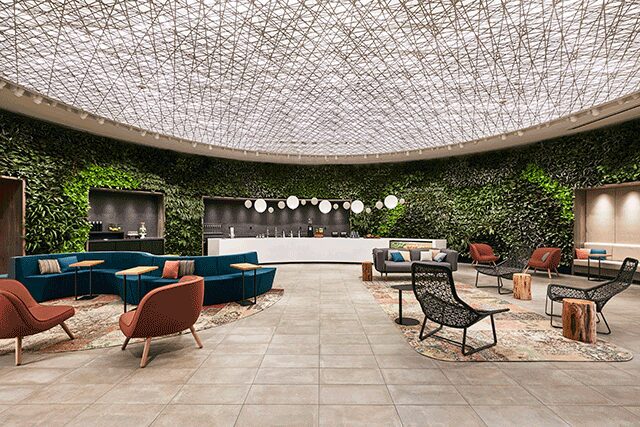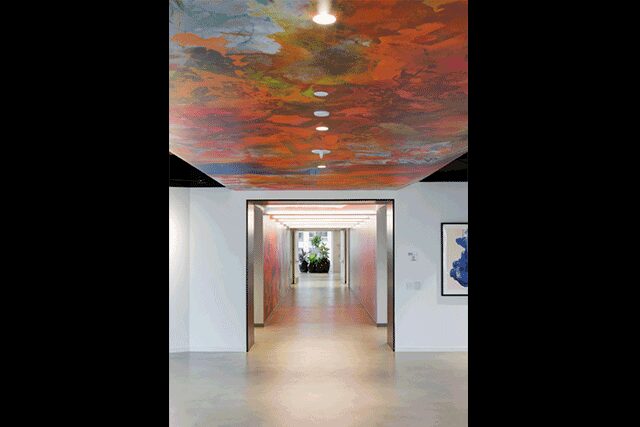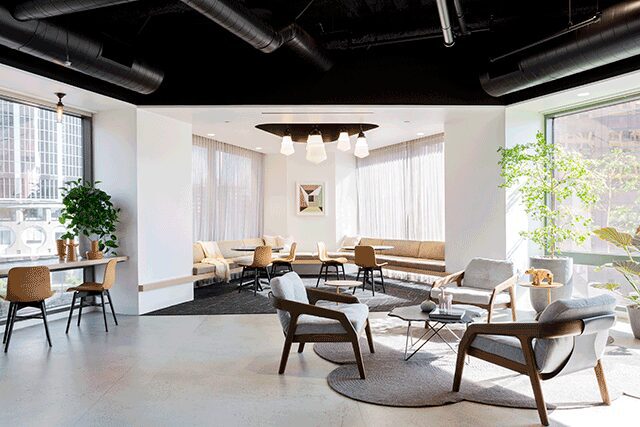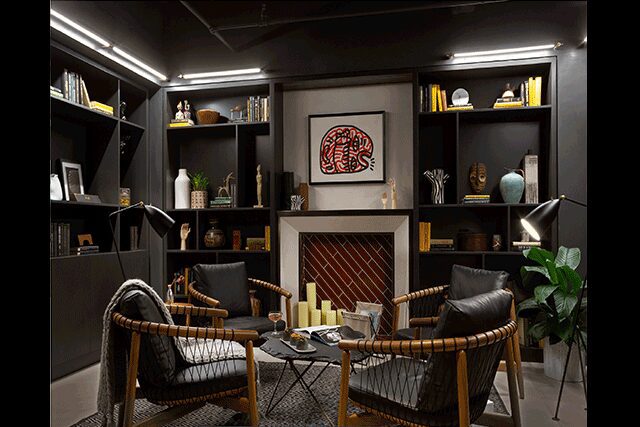For over 40 years, Joyce Bromberg, who started her career at Steelcase, has been immersed in workplace design. Now the chief design officer at New York-based Convene, she helps to imagine flexible and inspiring work, meeting, and event spaces in the U.S. and London. In her talk, Bromberg examined the forces shaping the evolution of the office.
Disruption Breeds Creativity
One of the world’s first significant disruptive innovations took place during the Renaissance when Brunelleschi’s adoption of the decimal point allowed architecture to become holographic instead of autographic, “more like a drawing or a print that could be replicated,” she explains. Bromberg points to the assembly line-era Industrial Revolution as another turning point, as it “took people out of the equation” and ultimately “translated to how we built our offices.” Privacy-devoid bullpen designs followed, causing “psychological harm to the people they were designed for,” she says. Later, the information revolution spawned the advent of knowledge work, with the eventual portability of electronics leading to collaborative, activity-based office setups.
The Future is Now
The singularity (when artificial intelligence will transcend that of humans) is the next big shift Bromberg sees. For instance, how will Route 80, lined with fast food joints and budget hotel chains for cross-country truck drivers, adapt to driverless cars? “A lot of the desire for the past is based on the impending reality of what is to come,” and so it is incumbent upon designers “to study trends so we can begin to understand and plan. The best way to predict the future is to invent it.”
Human-Centric Design
At Convene, Bromberg says it’s important for guests to readily access free coffee, but it’s also designed to make it easier for Convene employees to restock. “I have the other stakeholder, my company, in mind at the same time, so we are not losing money through this whole transaction.” The human-centric design fosters meaningful experiences, and research is paramount to the process. “Ask people questions in person,” she says, like the chef in the kitchen or the service tech as they are reloading shelves because when they are in the midst of an activity, they will share explicit, helpful knowledge.

The 151 West 42nd Street location in New York, from the in-house design team and STUDIOS Architecture





